
Android tablets are enjoying something of a resurgence. With most manufacturers dipping a toe in the tablet waters in the mid-2010s, it was the global pandemic that brought many back to the segment.
Samsung didn’t waver, however, behind some of the best tablets in the Android space – and enjoying the lion’s share of sales too. While the cheap end of the market is well served by the (admittedly forked Android) Amazon Fire tablets, Samsung dominates much of the rest of the Android tablet space.
The Galaxy Tab S Ultra was first launched in 2022 in the guise of the Tab S8 Ultra and the almost comically-large tablet continues in 2024 with the Tab S10 Ultra. It sticks to the 14.6-inch display, dwarfing the largest 13-inch iPad Pro – and if you’re in the market for a large tablet then there are few other choices at this size.
Samsung Galaxy Tab S10 Ultra: Price & Availability
The Samsung Galaxy Tab S10 Ultra costs a not insignificant £1,199 / $1,199 / AU$2,099 – although it’s already attracted discounts since it was announced in September 2024. We've been living with our review sample for a long time before publishing this review.
There’s just the starting price for the 12GB RAM and 256GB storage – which brings it in cheaper than Apple's iPad Pro equivalent (although not by much at launch). But Samsung does produce discounts regularly, so you should be able to get it for quite a bit less – check the widget above to see real-time pricing.
Galaxy Tab S9 Ultra vs S10 Ultra: What's different?
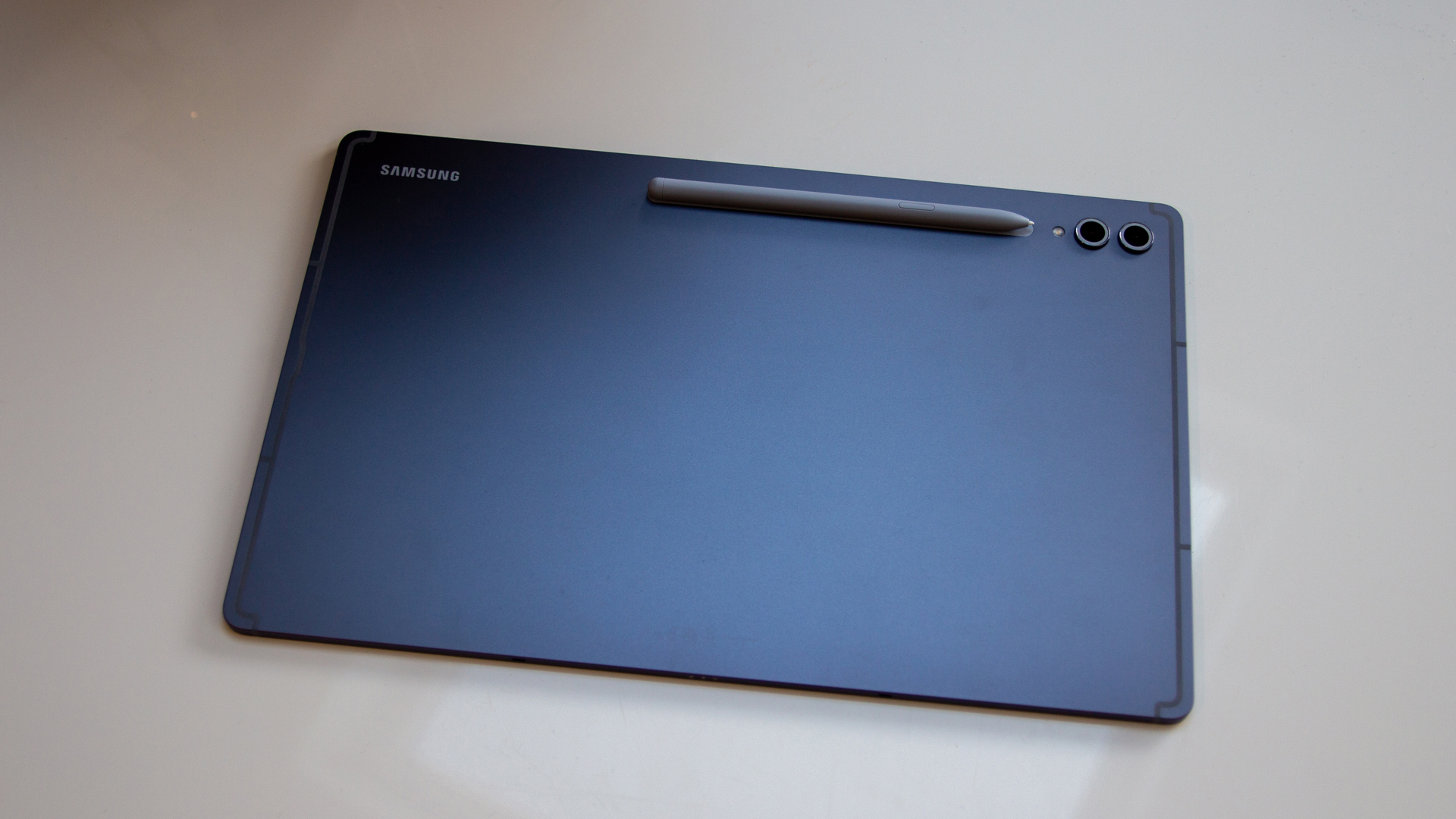
While some manufacturers are a little inconsistent with their tablet upgrades, Samsung has been a lot better. That means that a comparison to the Galaxy S9 Ultra is valid, because you’ll find that it’s an iterative update.
There’s very little difference in the physical design of these two tablets, the only real difference being that the Tab S10 Ultra is 0.1mm slimmer – at 5.4mm. There is a couple of grams difference in the weight too – it's 14g lighter than the older tablet – but still rather hefty, at 718g.
Naturally, there’s an updated processor, here using the MediaTek Dimensity 3900+, compared to the Snapdragon 8 Gen 2 of the Tab S9 Ultra. That gives it a slightly higher clock speed on the big cores.
While the display is the same, there’s a slightly different finish, so the Tab S10 Ultra's screen will handle reflections better than the older slate – making it a little more useful in brighter conditions.
There’s still support for microSD, now up to 1.5TB. Other than those major differences, there's now a Moonstone Grey or Platinum Silver finish rather than the Graphite of old.
Samsung Galaxy Tab S10 Ultra review: Design & Display
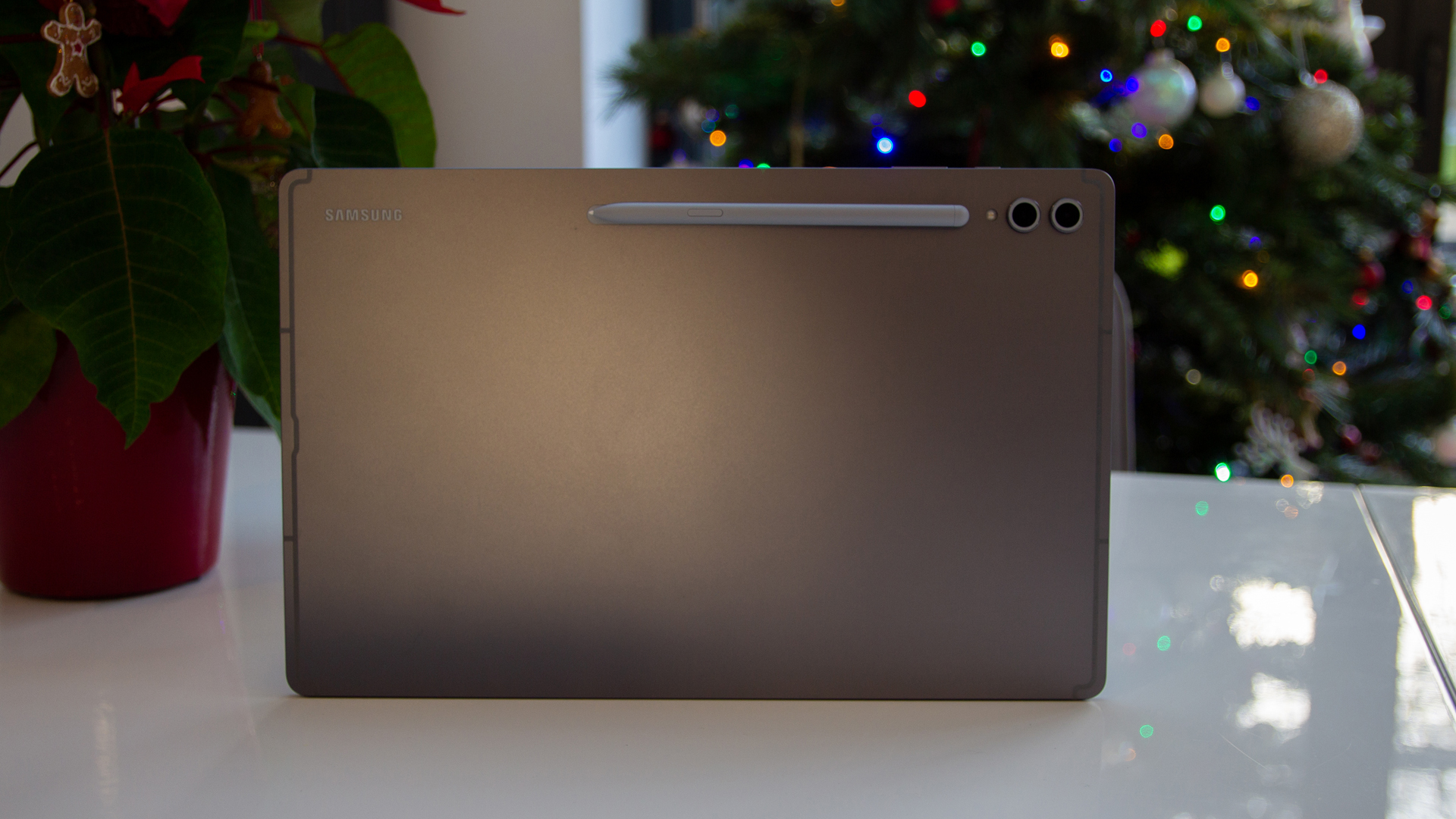
The Samsung Galaxy Tab S10 Ultra tops the range of Samsung tablets, not only offering the largest display, but also the narrowest bezels around the screen. That adds one element to the design, which is a notch at the top (on one of the long sides) housing the two front-facing cameras.
Slim is definitely the thing for the Tab S10 Ultra – although it is beaten by Apple, with iPad Pro (at 5.1mm), not that it makes a huge difference. The real takeaway is that tablets this slim fit better into their keyboard cases without everything getting too thick. Here that’s the £339 / $349 / AU$599 AI Book Cover Keyboard, which includes a trackpad and a kickstand at the rear – so you can use your Tab Ultra as a laptop.
But – just like the iPad Pro – that keyboard cover doesn’t come in the box; once you put together the tablet and the keyboard, the price rivals what you might pay for the Samsung Galaxy Book 4 Edge, which I’d argue will give you a better computing experience if you intend to use the keyboard a lot.
Back to the tablet, though, and the S Pen stylus is included in the box, for note-taking or if you want to turn your hand to a bit of digital artistry. It attaches to the rear of the tablet magnetically – which is fine for light storage, but it won’t stay in place if you’re putting it into a back, as it will get knocked off.
The Tab S10 Ultra is finished in aluminium with a premium build, but that 718g is certainly heavy, so this isn’t really a tablet you want to hold for long if you’re doing anything – it’s definitely the sort of tablet that likes to be resting on a desk. It also has an IP68 rating, so it’s protected against water damage if you drop it into the bath.
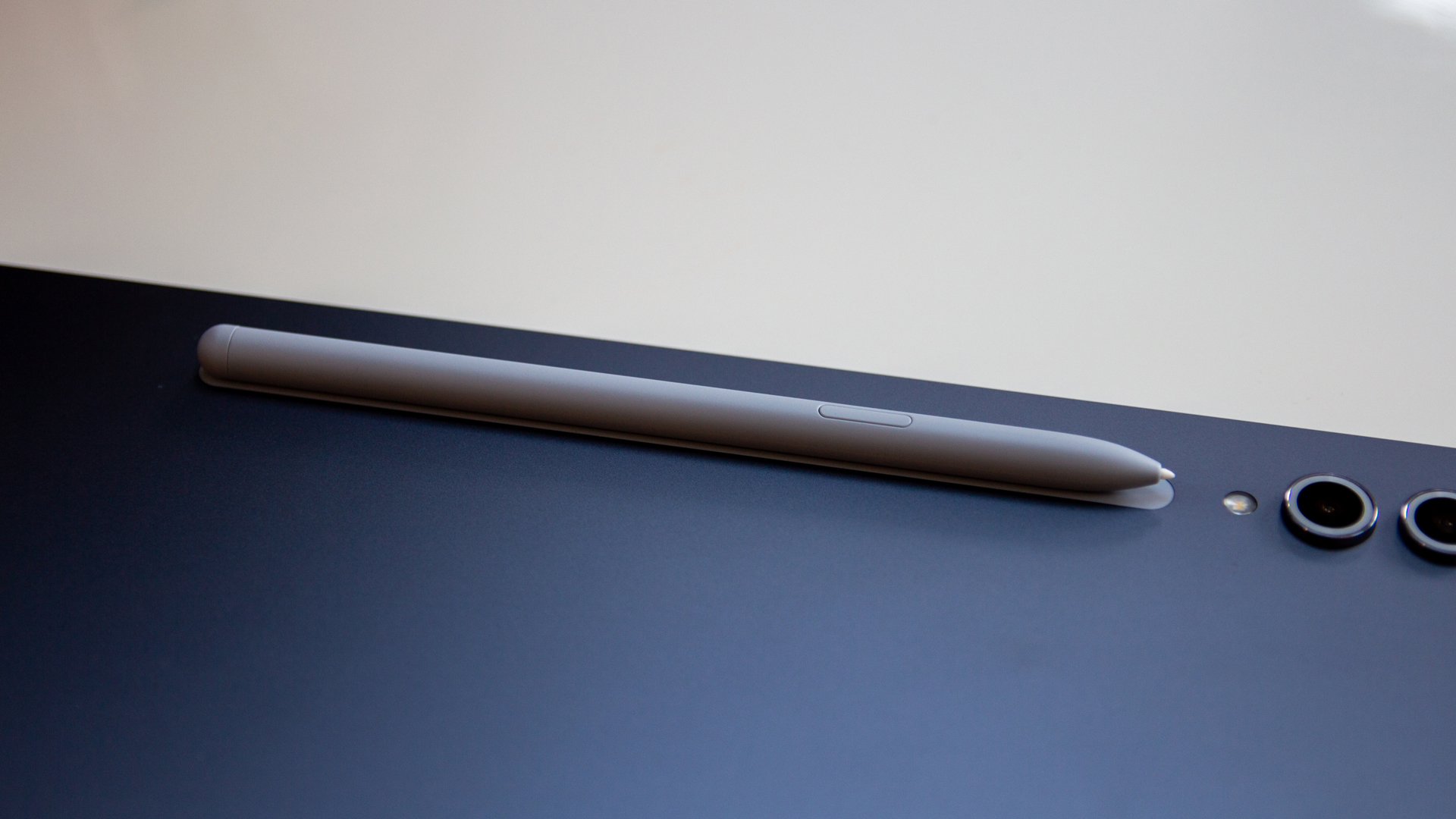
The display on the Tab S10 Ultra is stunning. It’s an AMOLED panel, something that Samsung is well known for, with a 2960 x 1848 pixel resolution and a 16:10 aspect ratio. That makes this very much a landscape-orientated tablet. The display has a 120Hz refresh rate for smooth scrolling and it’s adaptive so it will adjust to what you’re doing to help save battery while looking its best.
The display has a peak brightness of 930 nits, which isn’t as bright as the best phones of today, but there is a coating on the display surface designed to reduce glare compared to the previous model. That helps to cut down on reflections a little, but there’s no avoiding that this is a large glass expanse, so bright surroundings will reflect off it.
The screen aspect ratio is good for consuming video content, as there’s slightly less chance of black bars top and bottom compared to the iPad (which is a 4:3 ratio). Movie content looks great, helped by the fact that you’re usually watching it at close range, so it’s really immersive on that big screen – but you’ll definitely need something to prop it up, because leaning it against something will just see it slide away.
The Samsung Galaxy S10 Ultra delivers those rich colours that you expect and those deep blacks, so it’s great for entertainment on the move. Just keep a cloth handy to wipe away those inevitable fingerprint smears – just as you have to with the best iPads too.
Samsung Galaxy Tab S10 Ultra review: Features & Camera
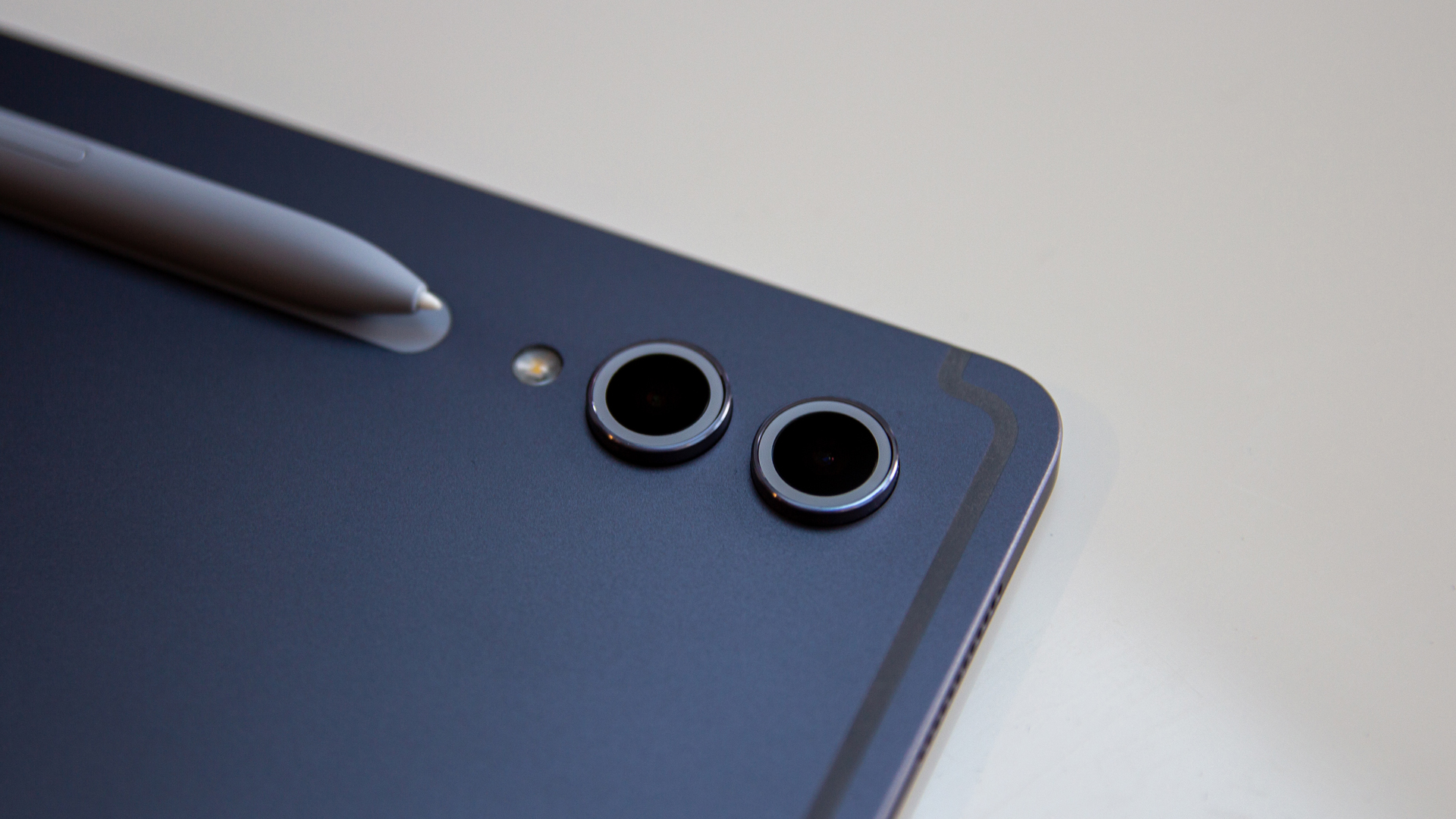
At the time of writing the Samsung Galaxy Tab S10 Ultra runs on Android 14 with One UI 6.1.1. But this tablet comes with Samsung’s promise of 7 years of software support. It’s expected that the Android 15 update will arrive with One UI 7 in early 2025 – and there'll be plenty of updates thereafter.
One of the features that Samsung highlights on the Tab S10 Ultra is Galaxy AI, bringing with it a range of features for smarter note-taking, photo editing and translations. There’s support for Split View editing as well as the AI-powered Circle to Search, to make it really easy to identify things you see when browsing.
It’s also really easy to open apps in a split-screen view – and on a tablet of this size that’s actually useful, as you can refer to information in a different app, while taking notes elsewhere. That gives the size of this tablet purpose, but it’s not a unique feature – it’s something that Samsung has offered for many years.
That also includes DeX, where the user interface behaves more like a desktop computer – and you can have this launch whenever the keyboard attaches. It’s another option for working on the Galaxy Tab S10 Ultra and I get the feeling that most people interested in it will be producing something, rather than it just being a giant TV-watching slab.

With that, there are the same drawbacks working on the Galaxy Tab S10 Ultra as you get elsewhere on Android. The optimisation of apps isn’t as comprehensive as it is for iPad, and there are fewer to choose from.
While the handling of external devices you might connect through the USB-C port is considerably better than it is on iOS and the iPad, I can’t help feeling that your work needs to have a fairly simple workflow for the Tab S10 Ultra to be your tool of choice. Certainly, it won’t do everything that you can do on a Windows laptop or Mac – and that’s often the problem.
There are two 13-megapixel cameras on the rear of the Galaxy Tab S10 Ultra: the main camera, supported by an ultra-wide camera. As I’ve often said before, I don’t put much stock in tablet photography. I know some people have a requirement as part of a work process to take photos and using these cameras is really about the convenience of just using one device.
If you actually want a good photo to share, your phone will give you significantly better results. The tablet's front camera, however, is a slightly different proposition – as video calling is popular and having a decent camera certainly helps. The option for an ultra-wide view to get more people into a video call is great – and apps like Zoom will default to the wider view. You don’t get to choose within most video calling apps, but at least the hardware is there if it is supported.
Samsung Galaxy Tab S10 Ultra review: Performance & Battery

There’s no lack of power in the Samsung Galaxy Tab S10 Ultra. The MediaTek hardware makes everything slick and fast for a premium experience. There’s no problem using apps side-by-side or switching between them. While Samsung suggests that you might use the tablet for gaming, it’s not a great device for touch-optimised games designed for a phone, just because it’s so big.
But the great display quality makes everything you view look rich and sumptuous, while the speakers that Samsung has packed into this slim device are also pretty good. Firing up a movie in a hotel room and freeing yourself from headphones isn’t a bad experience.
The battery comes in at 11,200mAh, with the promise of 10 hours of internet use or 16 hours of video playback. That’s comparable to the iPad Pro M4 and I found that the battery life on this tablet was solid. I also found that the hardware didn’t appear to heat-up when under load – it just got on with whatever tasks I threw at it.
Charging comes in a 45W – the same top speed as you’ll find on the Galaxy S24 Ultra phone – and that means it will take a couple of hours to charge your tablet. There’s no charger in the box though, which is all part of current regulations.
Samsung Galaxy Tab S10 Ultra review: Verdict
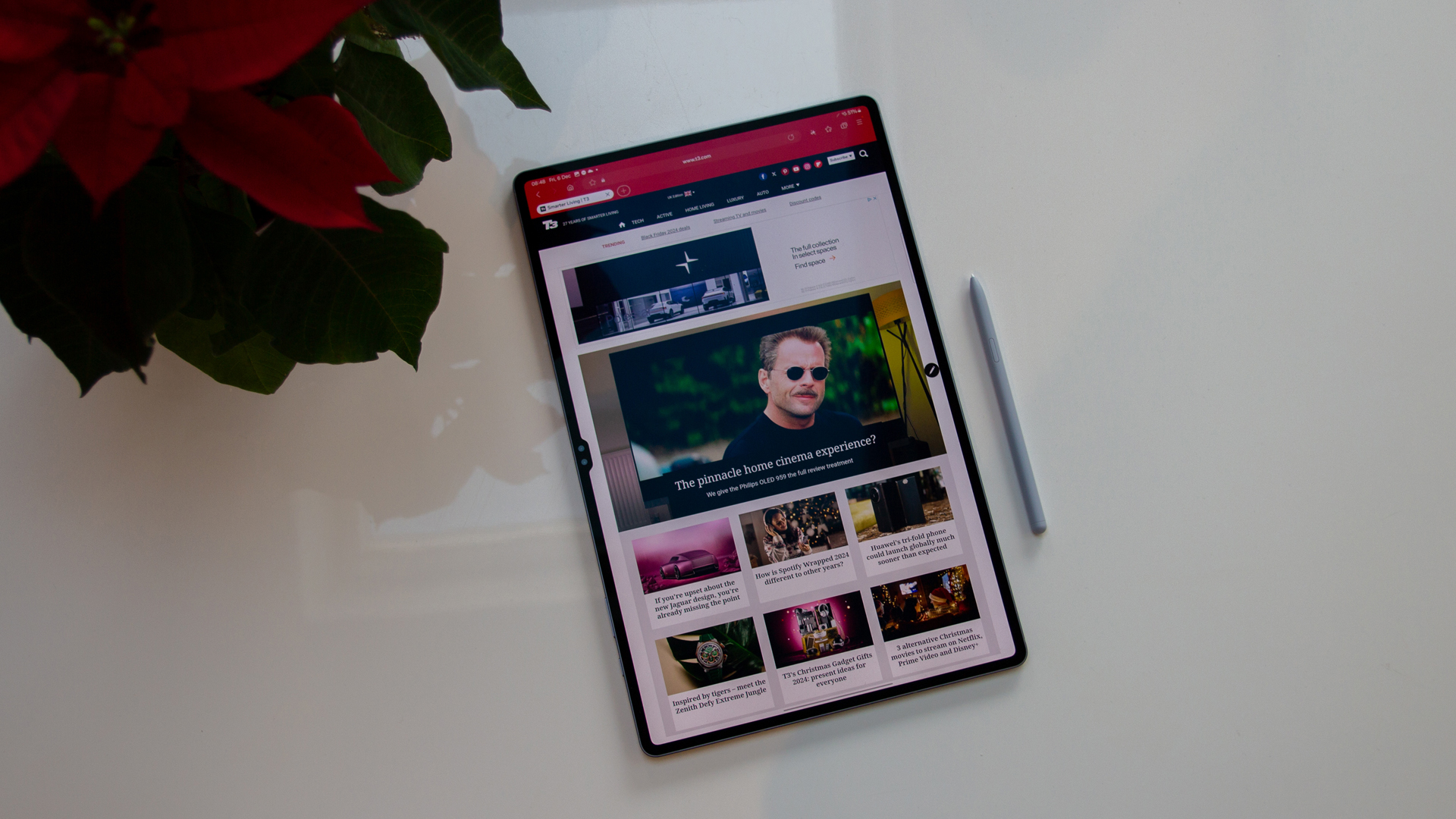
The Samsung Galaxy Tab S10 Ultra is a quality large-scale tablet experience. It’s loaded with performance and in terms of build quality, display, battery and entertainment scope, it doesn’t put a foot wrong.
Like all Android tablets, however, it’s slightly hampered by a smaller selection of apps optimised for the larger screen – where Apple's iPad still has an advantage.
Practically speaking, this Samsung tablet is too large to use without a stand: holding it for any period of time soon becomes a chore – unless you’re scribbling notes, in which case it’s fine – so for those wanting to consume media, you’ll have to factor in a case to protect the expanse of screen.
But if you’re looking for the biggest and the best, then look no further: Samsung dominates Android for a reason and all those reasons play out in the Galaxy Tab S10 Ultra's overall experience.
Also consider
Few tablets sit in a rivalling position to the Samsung Galaxy Tab S10 Ultra – and we’d be remiss not to mention the Apple iPad Pro. It’s the benchmark in the tablet space, it costs about the same and even as an Android user, the iPad is still a great choice because Google’s apps work so well on it. You can, literally, use an iPad without getting tied into any of Apple’s apps, so it’s always worth considering.
Or you might consider the older Galaxy Tab S9 Ultra. As there are few physical differences between these tablets – and Samsung’s software support rolls back to the Tab S9 family too, you could save yourself a chunk of change by opting for the older model.







